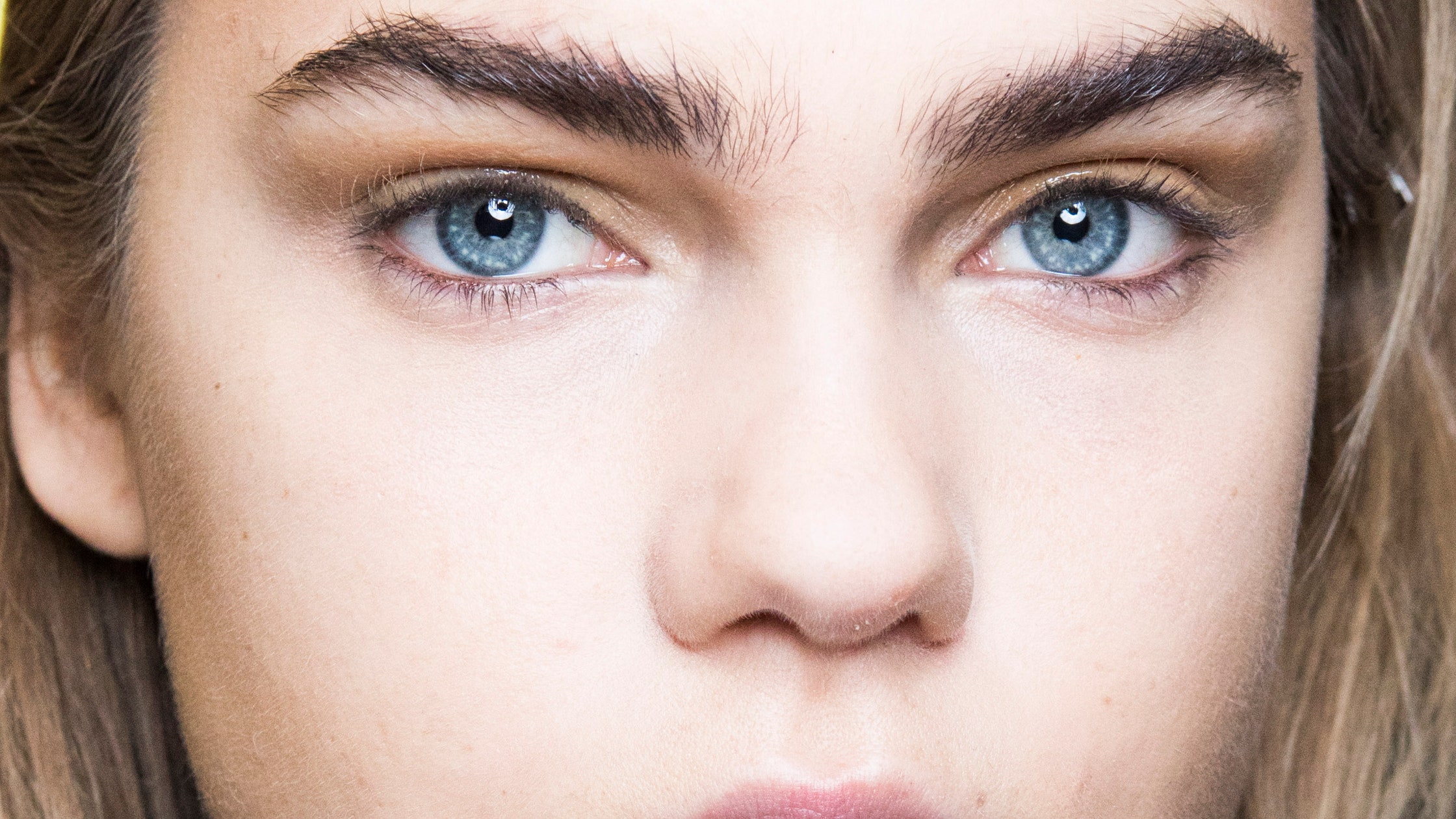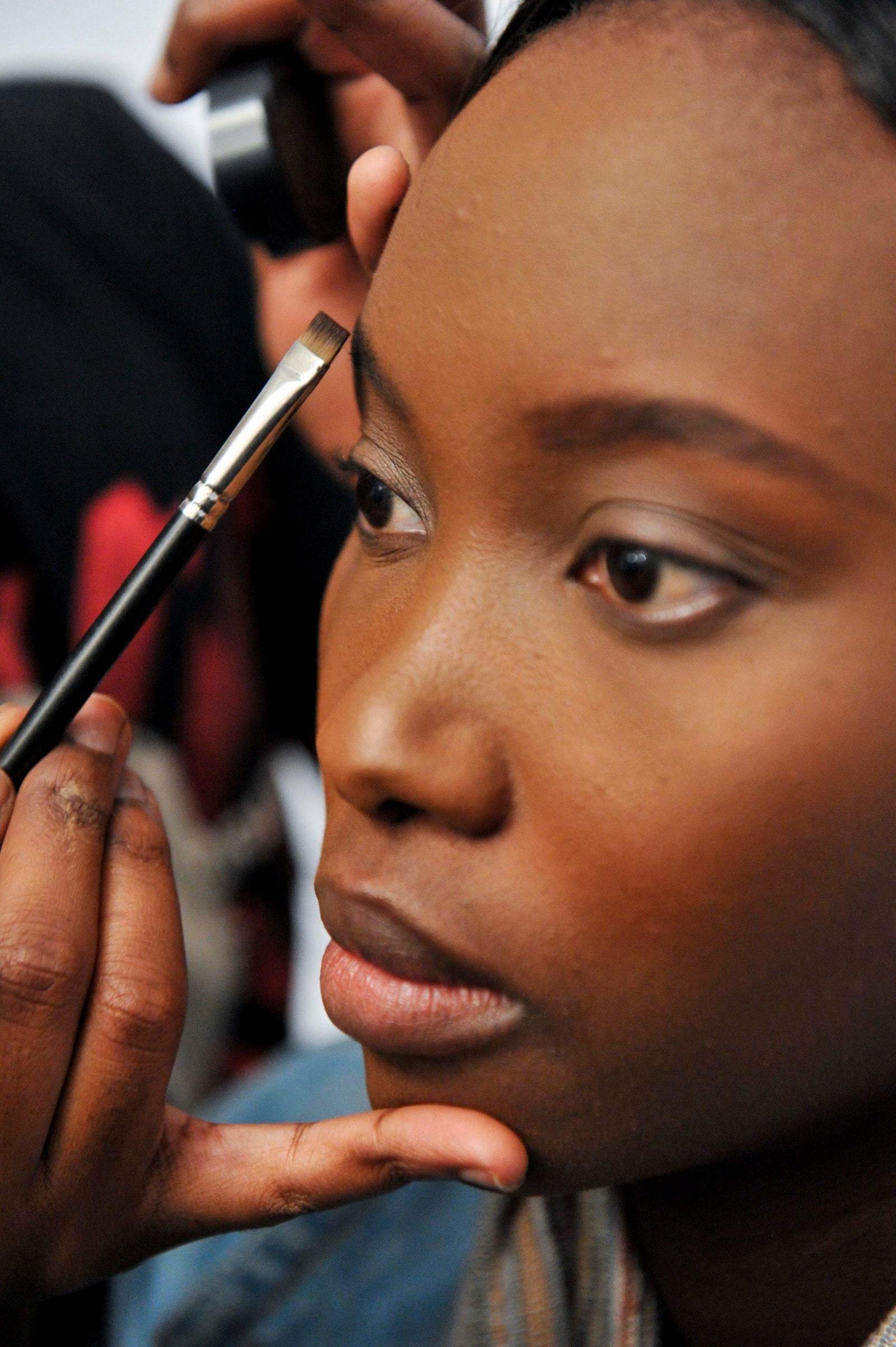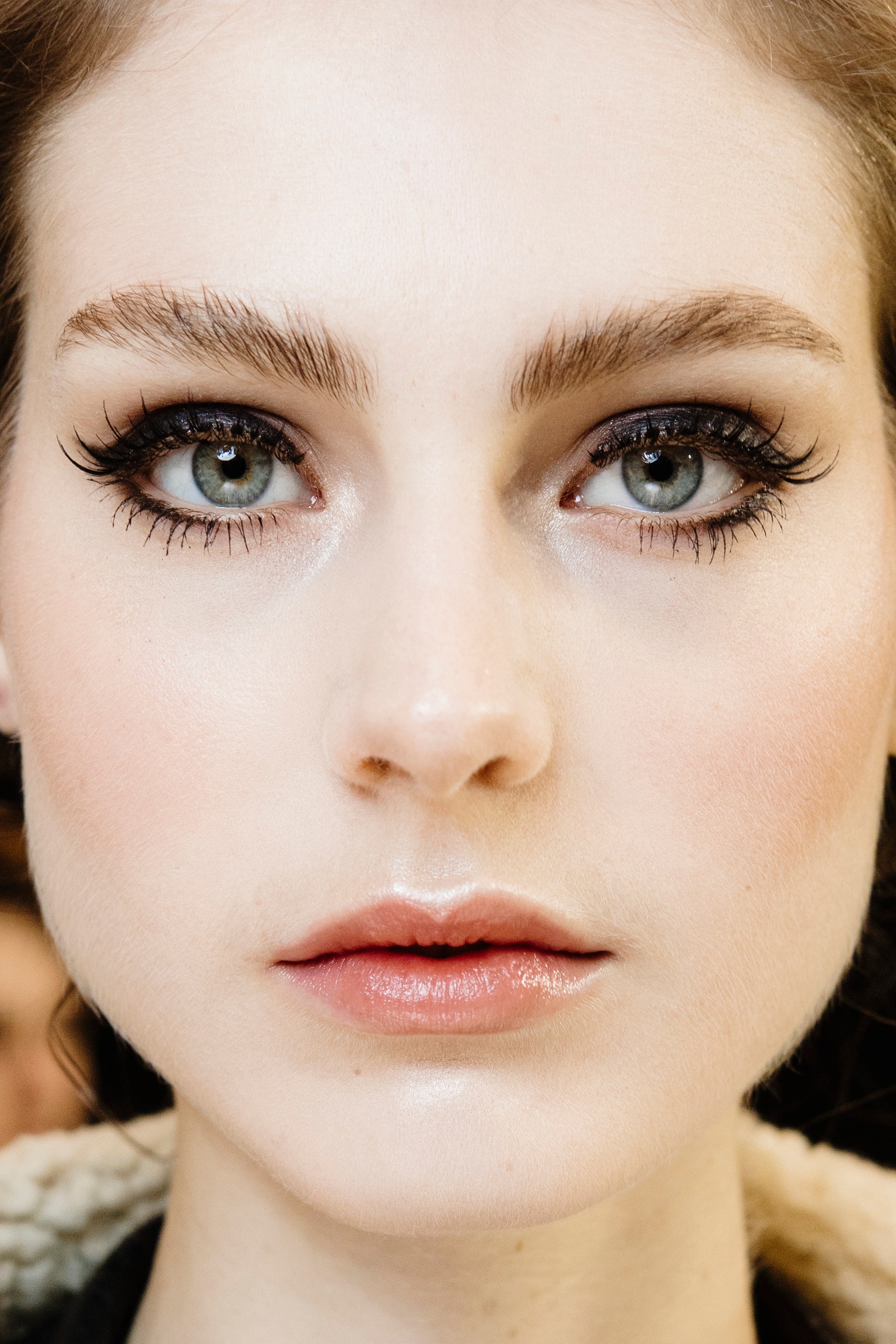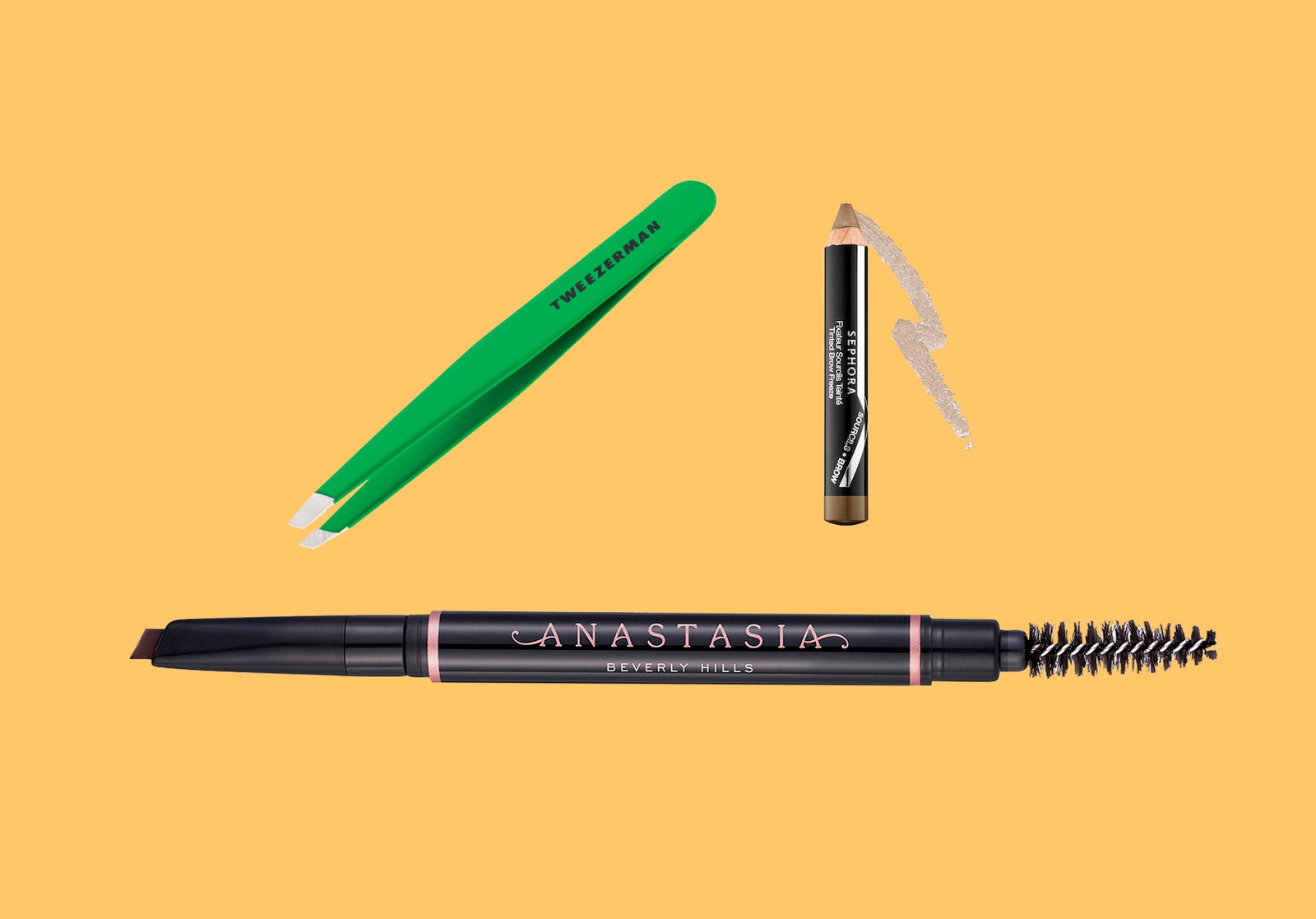
Calling all opinionated beauty lovers: We want to know which products you can’t live without! Take our annual poll to pick the top hair, makeup, nail, and skin-care products that deserve our coveted Readers’ Choice seal.
If you’re over the age of 12, then you’ve likely been subjected to a tweezing incident gone wrong or an over-enthusiastic beautician taking her suppressed aggression out on your brows. Those who have experienced what I like to call “eyebrow trauma” know just how drastically the slightest change can alter your entire face shape, structure, and sometimes self-esteem.
Growing out your brows after such experiences require tender care and patience, similar to trying to raise a house plant in a dark New York City apartment. If you’ve lost as much as half a brow (or more), the weeks and months it takes waiting for it to grow back can be pure agony. But it absolutely doesn’t have to be like that. Believe it or not, there are plenty of ways to smoothly transition your brows off the struggle bus.
We tapped brow masters Robin Evans, Maribeth Madron, and Stevi Christine for tips on how to grow out your brows with Michelle Obama-level grace.
At what point should you consider growing out your eyebrows?
If you feel like your brows aren’t doing anything for your face shape or you’re just not into how they look anymore, then it’s time to consider growing them out. “You know it’s time to grow out your brows when you’re going to see a pro more than once a month, or you no longer like the way you look without brow makeup,” Madron explains. She says that another indicator is if you notice you’re spending more time and energy on brow makeup than the rest of your face.
Christine is in the same boat, noting that it may be time for a grow-out “when your brows appear too thin, the shape is off, or they don’t look related.” I’m sure you’ve heard that eyebrows should look like “sisters, not twins,” meaning that they don’t have to match exactly in order to look amazing, however, “you don’t want them to look completely different, either.”
How long does it typically take for eyebrows to grow out?
If you feel like your brows aren’t doing anything for your face shape or you’re just not into how they look anymore, then it’s time to consider growing them out. “You know it’s time to grow out your brows when you’re going to see a pro more than once a month, or you no longer like the way you look without brow makeup,” Madron explains. She says that another indicator is if you notice you’re spending more time and energy on brow makeup than the rest of your face.
Christine is in the same boat, noting that it may be time for a grow-out “when your brows appear too thin, the shape is off, or they don’t look related.” I’m sure you’ve heard that eyebrows should look like “sisters, not twins,” meaning that they don’t have to match exactly in order to look amazing, however, “you don’t want them to look completely different, either.”
“The growth cycle for brows is four months,” Madron says. “However, I’ve seen great progress with brow conditioner after eight weeks. I have also seen major brow revolutions take up to a year.”
She suggests RevitaBrow because of its visible results and no harsh side effects. “I’ve used it personally for over a decade and suggest it for my clients as well,” says Madron. “I also use Nutrafol supplements for healthy lashes and brows.” (Note: You should always consult your doctor prior to taking a new supplement for any purpose.) Brow conditioners work to help prevent breakage and promote growth.
The amount of time it takes for your brows to be restored to (some kind of) their former glory depends on the person, of course. Just as some lucky people can grow out their misshapen bangs within weeks and others have to wait months, the same rules apply to eyebrows — hair growth is hair growth, after all.
Hair at your eyebrows, like hair on other parts of your body, goes through a regular growth cycle,” says New York City-based dermatologist Joshua Zeichner. “Eyebrow hair grows actively for three to four months, followed by a resting phase, after which the hairs are released from the skin. Your body is constantly making new hair, so most people do not notice the shedding and renewal.”

Extremes and stress can result in thinning of eyebrow hair as well, but it can also be a bit more serious than a few fallen hairs. “Some underlying medical conditions may also contribute to eyebrow thinning, such as thyroid disease, anemia, malnutrition, and underlying autoimmune conditions,” Zeichner says.
Also keep in mind that if you’ve been the type to pluck away over the years, some parts of your brows may never grow back. “Overplucking can cause permanent damage to the follicle to the point where it can no longer grow new hair,” says Bosley Professional trichologist Michelle Blaisure. “Serums may help, but for most people they may want to look into microblading.”
But one of the most important things to remember if you want your brows to grow is keeping your body healthy overall. “To ensure optimal growth of eyebrow hair, make sure you have a well-balanced diet and consider a hair-growth vitamin,” says Zeichner.

Do growth serums work and should you use them?
These days, there is a wealth of options when it comes to helping along your grow-out phase. Brow-enhancing makeup tricks, microblading treatments, and hair-growth serums are all within reach on your journey to Lily Collins-worthy natural brows — or at the very least, brows better than your current ones. Keep in mind, though, there aren’t any products 100 percent proven to grow brow hair specifically, however, there are products that our pros believe work better than others.
According to cosmetic chemist Ginger King, brow serums that actually work do so “by stimulating the hair follicle health,” and suggests reading the ingredient label to be sure your serum has peptides. “They are the best choices for safety,” she says. “There are many types of peptides which a consumer can generally recognize by the wording ‘peptide’ on the ingredient list.” Zeichner also highly suggests using topical brow serums that contain peptides. “Peptides help stimulate the activity of the hair follicle to give greater length and thickness of eyebrow hairs,” he says.
King also emphasizes looking for clinical evidence from the company claiming to improve the appearance of a fuller eyebrow, because if they’re serious about their product they’ll always have trials.
Evans and Christine both suggest using Grande Brow Serum, but they also note that in order to maintain the results at a certain level, they must be used consistently. RevitaBrow Advanced Eyebrow Conditioner is another popular choice for shoppers. “Brow serums do work,” Evans says. “However, the growth that they promote will fall out after discontinued use. Keep that in mind. It’s all about commitment.”
Christine agrees with the notion that your brow serum regimen is not to be slacked on. “The thing is to use these products religiously because if you don’t, you won’t get the growth you want.”

How do you keep them groomed in the grow-out phase, and what products should you use?
If you’ve ever so much as browsed a drugstore makeup aisle, then you may have felt overwhelmed by the number of eyebrow products available. Narrow down your search. Christine suggests using NeuBrow during the growing process. “This product makes your brows darker, which is a win-win for those wanting a fuller, darker brow.”
Madron is a fan of wax-based pencils. “During the grow-out phase, use a wax pencil with pigment to cover the holes or try a pomade-and-powder combination for longer wear.” We like the Sephora Collection Tinted Brow Freeze
If you’ve ever tried to go from pencil-thin brows to bushy and bold, then you know that haggard in-between phase all too well. Of course, your eyebrows will look a little odd as they grow, so you have to work to keep them looking as groomed as possible. “I brush my eyebrows daily using a little brow pencil to enhance the shape,” says Evans. “Every few days, I tweeze any little coarse hairs underneath the brow line to keep them looking nice and clean.” We like the Tweezerman Slant Tweezer, which has won several Best of Beauty Awards.
When growing out your brows, you should fill in the gaps to discourage you from tweezing the new growth as it comes in. Looking in the mirror every day can be daunting, so try pulling focus elsewhere with a bright lip color or a pretty necklace.” To fill in the sparse patches, we like using the Anastasia Beverly Hills Brow Definer.

Moving forward, should you DIY your brow grooming or go to a salon?
When it comes to finessing your brows in the grow-out phase, we’re all for grooming at home. But when they need a bit of a cleanup, how do you know whether or not you can go the DIY route or if you should stick to the professionals? Both Christine and Madron agree that it depends on your natural brow.
“DIY is a great option if you have naturally good brows for your face shape and feature size and only overdid it a few times,” says Madron. “If you didn’t start with great brows, had a major hacking incident, or desire a radical change, consult the pros.” That way, you can set a strategy for how you want them to grow in, and how you want to maintain them as they do so.
While Christine agrees, she notes that the decision also depends on the look you want to achieve and how fast your hair grows. “For the lucky ones, brows grow back fast,” she says. “But if you want to change your shape or grow fuller brows, it can take months for people to do it on their own. Even people like me — I haven’t tweezed my brows in years.
Overall, if you’re trying to get your brows back one of the most important things you can have is patience. Great brows aren’t regrown in a day, or even a few days, so hang in there and whatever you do, step away from the tweezer.
